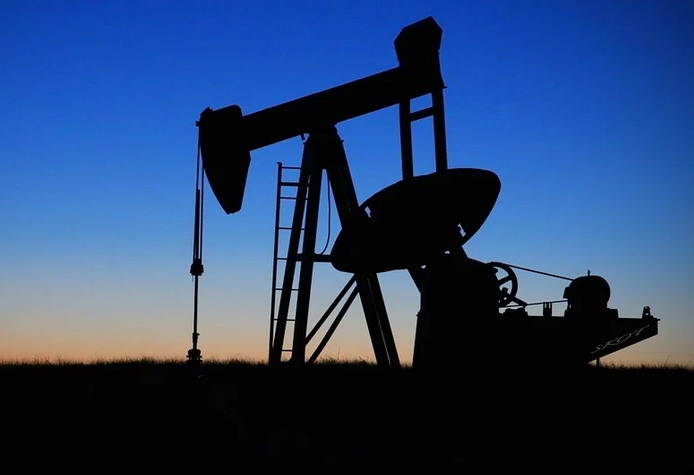What Is Petroleum Used For Today?

Petroleum or crude oil is a fossil fuel in liquid form that was formed from the remains of dead sea creatures that settled on the bottom of the seas and oceans and were covered over time by sand and clay.
After a very long period of time (millions of years), due to high temperatures and pressure, and the absence of air, the organic remains of the dead marine creatures have been turned into the today’s reserves of oil (petroleum) and natural gas.
What Are the Uses of Petroleum?
Crude oil or petroleum is a dark and oily liquid containing a mixture of hundreds of different compounds. Once extracted from the underground reservoir, petroleum is sent to refineries to be purified and turned into useful products.
Petroleum Separation
The process used to refine petroleum is a separation process called fractional distillation.
Petroleum is introduced into a furnace to be heated and turned into vapors. The petroleum vapors obtained this way are then fed into the bottom of a distillation tower. The resulting vapour will rise through the vertical column of the tower.
In the upper section of the tower, the temperature is much lower (around 77°F or 25°C), compared to the bottom area where the temperature has the highest value (up to 752°F or 400°C).
Large hydrocarbons have high boiling points, so they are removed at the bottom of the bottom of the distillation tower.
Smaller molecules condense higher up the column.
Fractions Obtained from Petroleum through Fractional Distillation
The first fraction with the smallest molecules (between 1 and 4 carbons in length), has such a low boiling point (under 40°C or 104°F), that is removed in gaseous form at the top of the distillation tower.
This fraction is called refinery gas or bottled gas (propane, butane).
The second fraction of petroleum is gasoline with molecules between 5 and 7 carbons in length.
Being still a fraction of small chain hydrocarbons, vaporizes at a low temperature (under 70°C or 158°F), and can be easily ignited.
The next petroleum fraction is naphtha, which is not a very useful fuel, but is a valuable source of organic molecules.
Naphtha has a boiling point between 70°C and 160°C (158°F and 320°F), and is used to form other fuels or alkanes.
The fourth fraction is kerosene, with a boiling point between 160°C and 250°C (320°F and 482°F).
Diesel is the next fraction with a boiling point between 250°C and 350°C (482°F and 662°F). Diesel is less volatile than gasoline.

Petroleum refining in the United States, image source: pixabay.com
Below diesel we have the residue fractions with a boiling poit between 300°C and 370°C (572°F and 698°F) They include: fuel oil, lubricating oils and waxes.
The very bottom fraction is bitumen with a boiling point over 370°C (698°F).
Petroleum Products Uses
1. Refinery Gas or Bottled Gas
It is called like this because it can be stored under high pressure in bottles and tanks. You’ve already seen bottles and small tanks of propane or butane used to run barbeques or heaters.
2. Gasoline
It is used as fuel for vehicles with internal combustion engines running on gasoline. Burned as fuel, gasoline produces a smaller amount of greenhouse gas emissions compared to diesel.
3. Naphtha
Naphtha is one of the petroleum fractions obtained in the distillation process. The number of carbon atoms in the naphtha molecule is about the same with the number of carbons in the gasoline molecule, but their structure is more complex.
Through a process called reforming, the naphtha molecule is rearranged and turned into a usable molecule that looks similar to a gasoline molecule.
Besides fuels. naphtha is also used to produce alkanes.
Alkanes can be turned into polymers, which are used to produce plastics.
4. Kerosene
Kerosene is fuel for jet engines. Kerosene is used to power aircraft, and also some rockets.
In some parts of the planet, kerosene is called paraffin, and is a common fuel burnt in kerosene or paraffin lamps used for lighting.
5. Diesel
Diesel is a common fuel used in cars, vans and trucks. Being less volatile than gasoline, diesel ignites under compression instead of spark.
Diesel is a more economical fuel compared to gasoline, but is more harmful for the environment.
6. Fuel Oil
Fuel oil is used as fuel in power stations and ships.
7. Lubricating oil
Lubricating oil sticks to surfaces and reduces friction while protecting from rust.
8. Waxes
Waxes along with oils can be used for polishing surfaces.
9. Bitumen
Bitumen is a residual product that acts like a thick black adhesive. When mixed with some gravel and sand, bitumen must be heated up to produce asphalt.
Asphalt is used to build roads because is a very resistant material. Bitumen can also be used to cover roofs due to its waterproofing properties.
What items are made from petroleum?
In everyday life, we use hundreds or even thousands of objects that are manufactured from petroleum and its derivatives.
You’d be surprised to find out that a very large percent of these objects are actually made from petroleum.
A 42-gallon (159 liter) barrel of petroleum is used to produce almost 20 gallons (75 liter) of gasoline, and the rest of it is used to produce diesel, kerosene, liquefied petroleum gas (LPG), fuel oils, lubricating oils, wax, bitumen, and a wide variety of other products.
We can mention here: plastics, tires, foods and medicines.
1. Plastics
Almost every object made of plastics or other derivates of petroleum and found in our homes: mugs, plates, shower curtains, toothbrushes, , toothpaste, the coating on your CDs and DVDs, balloons, refrigerators, fishing boots, flower pots, furniture, shoes and slippers, clothing, toys, etc. are all made of petroleum.
2. Tires
Petroleum can also be found in the tires of your car. Being so productive in the production of rubber, petroleum can be found in all tires created on the planet today, even if we talk about tires for small vehicles, trucks, planes, etc.
3. Foods
Petroleum can also be found in the food that we eat every day. Canned and packaged foods contain preservatives produced from petroleum. These preservatives keep food fresh by stopping the growth of bacteria, yeasts and molds.
4. Medicines
Many prescription drugs and medicinal products are produced today using petrochemicals, which are chemical products obtained from petroleum in the refining process.
We can include here: antihistamines, antibacterials, cough syrups, suppositories, creams, lubricants, ointments, analgesics, salves and gels.
What Are the Six Main Uses of Petroleum?
According to the U.S. Energy Information Administration, about 66% of the petroleum extracted today in the United States is used to produce fuels for the transportation sector, 28% in the industrial sector, 3% in the residential sector, 2% in the commercial sector and less than 1% in the energy sector for electric power generation.
What Are the Environmental Impacts of Petroleum?
Petroleum or oil, is a cleaner than coal, but dirtier than natural gas.
Being a fossil fuel, petroleum is a limited resource on our planet, and its use affects the environment due to the high level of air, soil and water produced.
Air pollution is produced when we burn fuels produced from petroleum.
Due to the very large number of vehicles on the road today, the huge amount of air pollution generated in every city by vehicles with internal combustion engines running on gasoline or diesel, has affected the life of millions of people.
Oil spills on the sea or land is another form of water and soil pollution that affects the environment and the habitats in the area where the accident occurs.
Final thoughts
Petroleum is still the largest energy source in the U.S., being used in the most important economic sectors.
Due to the fact that petroleum is a limited resource and pollutes the environment, mankind will slowly replace it with cleaner sources of power (natural gas and renewables).
When electric vehicles will replace the current vehicles with internal combustion engine, the amount of air pollution produced daily on the planet by the transportation sector will be drastically reduced, and the environment will have a chance to start recovering.







